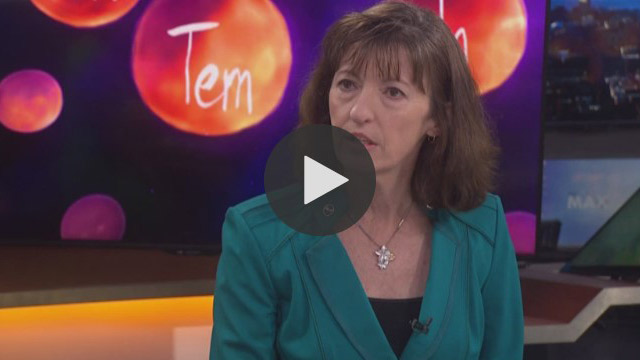amfAR Researchers Unable to Find HIV In London Transplant Patient
Second patient from Düsseldorf shows similar profile
SEATTLE, WA, March 5, 2019 – Researchers have reported that a stem cell transplant patient from London has not experienced a rebound of his HIV during the past 18 months off antiretroviral therapy (ART). His is the longest duration of ART-free undetectable virus in an adult since the Berlin patient, who is believed to have been cured by a similar procedure. The case was reported at the Conference on Retroviruses and Opportunistic Infections (CROI) in Seattle.
The patient is part of amfAR’s ICISTEM research consortium, which has so far enrolled 45 patients with cancer and HIV who have received or soon will receive stem cell transplants.
Another ICISTEM patient was also reported on at CROI—a man from Düsseldorf, Germany, who shows no evidence of viral rebound after a similar transplant procedure, though he has been off treatment only since November. Researchers will follow both patients closely to look for any signs of resurgent HIV.
Lead investigator in the London case, Dr. Ravi Gupta of the University of Cambridge, UK, reported that the HIV-positive man was diagnosed with cancer in 2013 and received a stem cell transplant in 2016. Like the Berlin patient—Timothy Ray Brown—he received donor cells with a genetic mutation (CCR5-delta 32) rendering them resistant to HIV infection. Since discontinuing ART in late 2017, the London patient has shown no trace of the virus.
Comprehensive reservoir analyses were conducted by the ICISTEM consortium, which is co-led by the University Medical Center Utrecht in the Netherlands and the IrsiCaixa AIDS Research Institute in Barcelona, Spain. It includes cure researchers who systematically assess changes in the HIV reservoir resulting from stem cell transplantation, and who provide treatment and monitoring guidance to the collaborating transplant doctors. The researchers are now able to compare changes in the HIV reservoir across the patient cohort.
The ICISTEM group has screened over two million stem cell donors to identify those with the CCR5-delta32 mutation, increasing the chance that new candidate transplant recipients may receive donor cells with this rare genetic mutation. With additional patients in the cohort about to stop ART in what is known as an analytic treatment interruption, researchers are cautiously optimistic that there may soon be additional cases of sustained undetectable virus in the absence of therapy.
“While we fully understand that stem cell transplantation is not a practical way of curing large numbers of people, we can learn a tremendous amount from these cases” said amfAR Chief Executive Officer Kevin Robert Frost. “And we can apply that new knowledge to the development of strategies aimed at a more widely applicable cure.”
Because the London and Düsseldorf patients received an intervention similar in many respects to the case of the Berlin patient, researchers can begin to compare and contrast the procedures. Mr. Brown, for example, underwent two stem cell transplants, whereas the London and Düsseldorf patients received just one. While Brown had intensive chemotherapy and irradiation to prep for the transplant, the London patient had low intensity conditioning and no irradiation, and the Düsseldorf patient received myeloablative conditioning but no irradiation.
A key question that has vexed researchers is whether or not the CCR5-delta32 mutation was necessary to achieve Mr. Brown’s cure. Since it was present in the cells transplanted into both Mr. Brown and the London and Düsseldorf patients, it will be important to follow them over time.
“Although it’s too early to say for sure, we’re certainly hopeful that the London patient is cured,” said Dr. Rowena Johnston, amfAR vice president and director of research. “amfAR’s investments in innovative and forward-thinking projects like ICISTEM give us the opportunity to learn which factors will form the scientific basis of a cure for HIV.”
Media Highlights
Share This:

